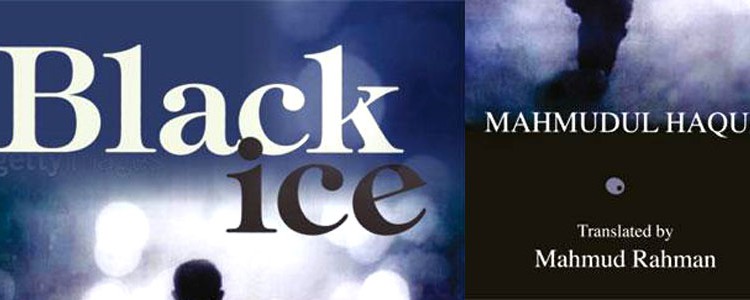On translations in India, 2013. Published in DNA, 20 Dec 2013
 (My article on translations in 2013, trends and changes has been published this morning in DNA, 20 Dec 2013. I cannot find the link online but here is a clipping of it sent via email to me. I am also c&p the text below. )
(My article on translations in 2013, trends and changes has been published this morning in DNA, 20 Dec 2013. I cannot find the link online but here is a clipping of it sent via email to me. I am also c&p the text below. )
 2013 was a positive year for publishing, certainly for translations that were visible. Translations were on the DSC Prize South Asian Literature 2014 shortlist that mainly focuses on general fiction in English, not in a separate category— Anand’s Book of Destruction (Translated from Malayalam by Chetana Sachidanandan) and Benyamin’s Goat Days (Translated from Malayalam by Joseph Koyippalli). Other translations that left an impression upon literary conversations of the year are — Shamsur Rahman’s The Mirror of Beauty ( translated from Urdu by the author); Habib Tanvir’s Memoir ( translated by Mahmood Farooqui); Sunanda Sankar’s A Life Long Ago ( translated from Bengali by Anchita Ghatak) and Sachin Kundalkar’s Cobalt Blue (translated from Marathi by Jerry Pinto); Ajay Navaria’s Unclaimed Terrain (Translated from Hindi by Laura Brueck); Uday Prakash’s The Walls of Delhi (translated from Hindi by Jason Grunebaum); Syed Rafiq Husain’s The Mirror of Wonders ( translated from Urdu by Saleem Kidwai); Malarvan’s War Journey: Diary of a Tamil Tiger ( translated by M Malathy); Mohinder Singh Sarna’s Savage Harvest: Stories of Partition ( translated from Punjabi by Navtej Sarna); Prabha Khaitan A Life Apart ( translated from Hindi by Ira Pande) and an anthology of New Urdu Writings: From India & Pakistan ( edited by Rakhshanda Jalil). In fact Penguin India’s best fiction title for the year was The Mirror of Beauty, according to Managing Editor, Sivapriya. She adds, “At Penguin we are developing a focused translations list that spans contemporary texts and modern classics and older classics.”
2013 was a positive year for publishing, certainly for translations that were visible. Translations were on the DSC Prize South Asian Literature 2014 shortlist that mainly focuses on general fiction in English, not in a separate category— Anand’s Book of Destruction (Translated from Malayalam by Chetana Sachidanandan) and Benyamin’s Goat Days (Translated from Malayalam by Joseph Koyippalli). Other translations that left an impression upon literary conversations of the year are — Shamsur Rahman’s The Mirror of Beauty ( translated from Urdu by the author); Habib Tanvir’s Memoir ( translated by Mahmood Farooqui); Sunanda Sankar’s A Life Long Ago ( translated from Bengali by Anchita Ghatak) and Sachin Kundalkar’s Cobalt Blue (translated from Marathi by Jerry Pinto); Ajay Navaria’s Unclaimed Terrain (Translated from Hindi by Laura Brueck); Uday Prakash’s The Walls of Delhi (translated from Hindi by Jason Grunebaum); Syed Rafiq Husain’s The Mirror of Wonders ( translated from Urdu by Saleem Kidwai); Malarvan’s War Journey: Diary of a Tamil Tiger ( translated by M Malathy); Mohinder Singh Sarna’s Savage Harvest: Stories of Partition ( translated from Punjabi by Navtej Sarna); Prabha Khaitan A Life Apart ( translated from Hindi by Ira Pande) and an anthology of New Urdu Writings: From India & Pakistan ( edited by Rakhshanda Jalil). In fact Penguin India’s best fiction title for the year was The Mirror of Beauty, according to Managing Editor, Sivapriya. She adds, “At Penguin we are developing a focused translations list that spans contemporary texts and modern classics and older classics.”
HarperCollins has an imprint dedicated to translations from Indian literature—Harper Perennial. Minakshi Thakur, Sr. Commissioning Editor says that “The translation market grew marginally in terms of value in 2013, but in terms of numbers it grew considerably. Harper did 10 translations as opposed to the 5 or 6 we were doing every year until 2012, from 2014 we’ll do about 12 titles every year.” Kannan Sundaram, Publisher, Kalachuvadu “Translations from Indian languages to English, from one Indian language to others and from world languages to Indian languages is definitely on the rise. Personally I have sold more translation rights and published more translations this year than before. Good Indian language authors are in demand like never before.” This assessment is corroborated by Aditi Maheshwari, Publisher, Vani Prakashan who says that “When we decided to do translations some twenty years ago, it was a very new phenomenon. We did translations from English to Hindi, Indian languages to Hindi and international languages to Hindi (without English as a medium).”
Another interesting aspect of translations too has successful publishing collaborations like that of making short fiction by Ayfer Tunc, Turkish writer and editor of Orhan Pamuk, The Aziz Bey Incident and other stories. It has been translated into Tamil and Hindi, but the English edition of this book is not available in India, all though it was released at the London Book Fair 2013. According to Thomas Abraham, CEO, Hachette, “the books sell well enough without being blockbusters —they were conceived with mid- range sales of 3k-5k like all translations are, and most of the time they tend to deliver that.”











